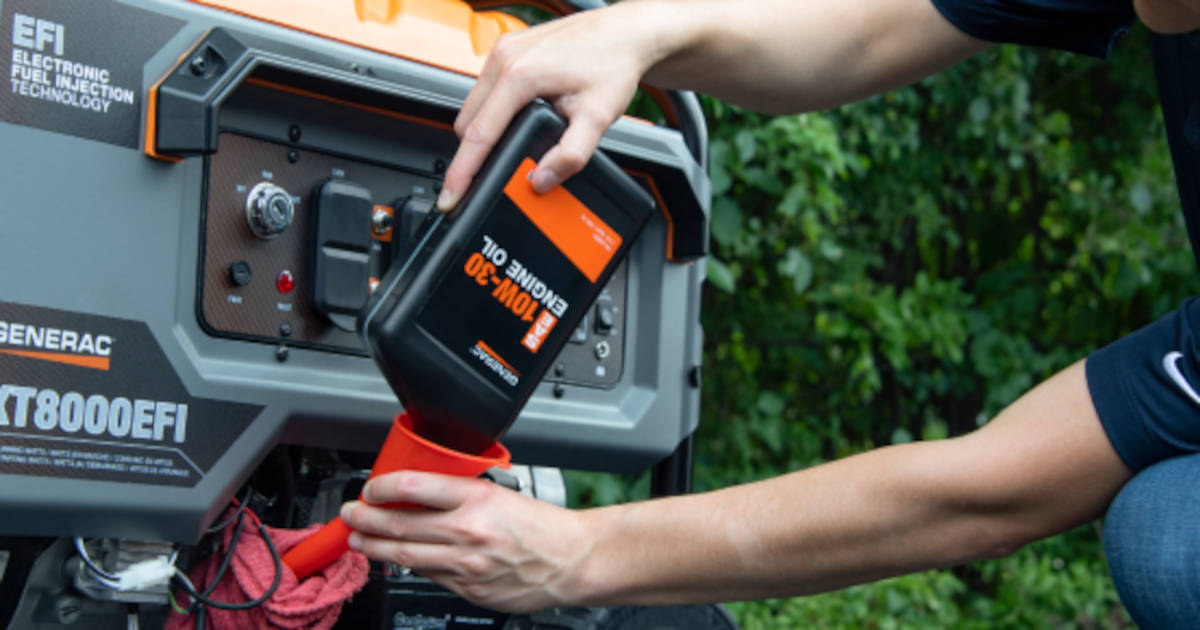We all know the feeling: a storm rolls in and leaves you without power. When this happens, you need to set up your portable generator to restore electricity to essential appliances in your home. Even though you want to move quickly, you should take each step slowly. Taking shortcuts could result in injury or even death.Generator Setup: Key Things to Do Before You Begin
Before you turn on the generator or plug in any devices, there are several steps you must take:
1. Read the Generator Manual Thoroughly Before Use
Every generator has different controls and operating procedures. Reading the manual is essential to understand how to start and operate it properly.
2. Inspect for Storm Damage and Safety Hazards
Check your property for damage after a storm. If you smell natural gas, do not use a gasoline-fueled generator.
3. Properly Place Your Generator for Safe Operation
Position your gasoline, propane, or natural gas-powered generator at least 15 to 20 feet away from your house. Ensure it's on a flat, stable surface, with the exhaust vent facing away from windows or doors. If you're using the generator during bad weather, it may require a cover or shelter.
4. Check Fuel and Oil Levels Before Starting
Always use fresh gasoline for fuel-powered generators. Gas containing ethanol absorbs moisture over time. Stale gasoline can make the generator hard to start and may damage the engine. Don't forget to check the oil level and make sure it's filled to the proper line to ensure the engine is well-lubricated.
5. Disconnect All Cords Before Starting the Generator
Disconnect all cords before starting the generator. Always start your generator before connecting it to your home or appliances. Plugging in devices beforehand could cause electrocution, damage to the generator, or even fire.
Generator Startup Guide: Safe and Easy Instructions
Once you've completed your setup, it's time to start the generator:
- Turn the fuel valve on to allow fuel to reach the carburetor.
- Move the choke rod from right to left to activate the choke.
- Flip the engine switch to the "on" position.
- Pull the recoil cord until you feel resistance, then release it. Repeat as needed.
-
If the generator doesn’t start after a few pulls, move the choke to "half-run" and try again.
- Once it starts, let it run for a few moments, then move the choke to the "run" position.
Connecting a Generator to Your House: What You Need to Know
Before plugging in any cords, allow the generator to run for a few minutes. Turn on the circuit breakers as directed by your generator's manual. After 3-5 minutes, you may begin connecting appliances. Start with the item that uses the most power, such as your refrigerator.
There are several ways to power appliances in your home:
Using Heavy-Duty Extension Cords with Your Generator
If you're using extension cords, they must be the correct gauge. Higher-gauge cords are for light-duty use (like lamps), while lower-gauge cords handle heavy-duty appliances. Using light-duty cords with a generator is a fire hazard.
- Use a 12-gauge heavy-duty cord or a 10-gauge extra heavy-duty cord.
- A 10-gauge cord is ideal for high-power appliances like refrigerators.
Convenience Cords for Generators: What They Are and How to Use Them
A convenience cord allows you to plug in multiple appliances at once. Plug the cord into the generator, extend it to your indoor area, and plug in the appliances.
How to Use a Through-the-Wall Kit for Safe Generator Connections
A through-the-wall kit lets you power indoor appliances without running cords through windows or doors.
- Drill through the wall to connect an indoor power panel with an outdoor power inlet box.
- Connect the generator to the outdoor inlet box using a power cord.
- Plug your indoor appliances into the indoor power panel. The generator will power them safely.
Connecting a Generator to Your Home with a Transfer Switch and Power Cord
Another option is to use a manual transfer switch with a generator power cord. Although this setup takes more time and money, it's a worthwhile long-term solution for ease and safety.
- The transfer switch allows you to power selected circuits in your home without using extension cords.
- This method supports hard-wired appliances, such as ceiling fans.
- Generator power cords come in various amperages-20-Amp, 30-Amp, and 50-Amp.
- Choose one that matches your generator's most powerful outlet.
- The "male" end (straight-blade plug) connects to the generator.
- The "female" end plugs into the outdoor inlet box.
WARNING: Never plug a generator into a wall outlet; this is called backfeeding, and it can electrocute utility workers or neighbors.